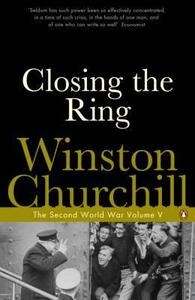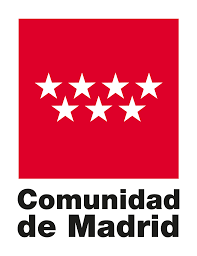The Second World War
Closing the Ring

Editorial Penguin UK
Fecha de edición mayo 2005
Idioma inglés
EAN 9780141441764
704 páginas
Libro
encuadernado en tapa blanda
Resumen del libro
Winston Churchill's six-volume history of the cataclysm that swept the world remains the definitive history of the Second World War. Lucid, dramatic, remarkable both for its breadth and sweep and for its sense of personal involvement, it is universally acknowledged as a magnificent reconstruction and is an enduring, compelling work that led to his being awarded the Nobel Prize for literature.
Closing the Ring chronicles the period between June 1943 and July 1944 as the Allies consolidated their gains towards a drive to victory - the fall of Mussolini, Hitler's 'secret weapon', the mounting air offensive on Germany, strategies to defeat Japan and the plans for D Day.
Biografía del autor
x{0026}lt;span x{0026}lt;span style='font-size:13.3333px;' ?Winston Leonard Spencer Churchill (Blenheim Castle, Oxfordshire, 1874-Londres, 1965), proveniente de una familia aristocrática victoriana, se graduó en el Royal Military College. Tras haber servido en la India, presenció la guerra anglobóer como corresponsal de guerra del periódico Morning Post. En 1900 fue elegido diputado por el Partido Conservador, que abandonó en 1904 para unirse al Partido Liberal. x{0026}lt;/span x{0026}lt;/span x{0026}lt;span x{0026}lt;span style='font-size:13.3333px;' El gran salto en su carrera política se produce en 1940, cuando es elegido primer ministro en sustitución de Neville Chamberlain. Después de perder las elecciones en 1945 contra los laboristas, recuperó la jefatura del Gobierno durante el periodo comprendido entre 1951-1955. Tras dimitir ese año, se dedicó a la pintura y la literatura, campo en el que destacó con obras como Paso a paso: del crepúsculo de la paz al resplandor de la victoria, Sangre, sudor y lágrimas, Los secretos de la guerra, Pensamientos y aventuras y Savrola. x{0026}lt;/span x{0026}lt;/span x{0026}lt;span x{0026}lt;span style='font-size:13.3333px;' En 1953 se le otorgó el premio Nobel de Literatura. x{0026}lt;/span x{0026}lt;/span x{0026}lt;p x{0026}lt;br x{0026}lt;/p x{0026}lt;/span








